Our Verdict
The iPad Pro 12.9-inch (M1) offers one of the best screens ever made, and as much power as a desktop PC. It’s the most flexible creative tool on the planet, but the total package may be overkill for some, and iPadOS needs to evolve along with it.
For
- Astounding mini-LED display
- Incredible M1 performance
- Fantastic features overall
Against
- Screen brightness is the same
- iPadOS remains limiting
- Single port could limit flexibility
Why you can trust Creative Bloq
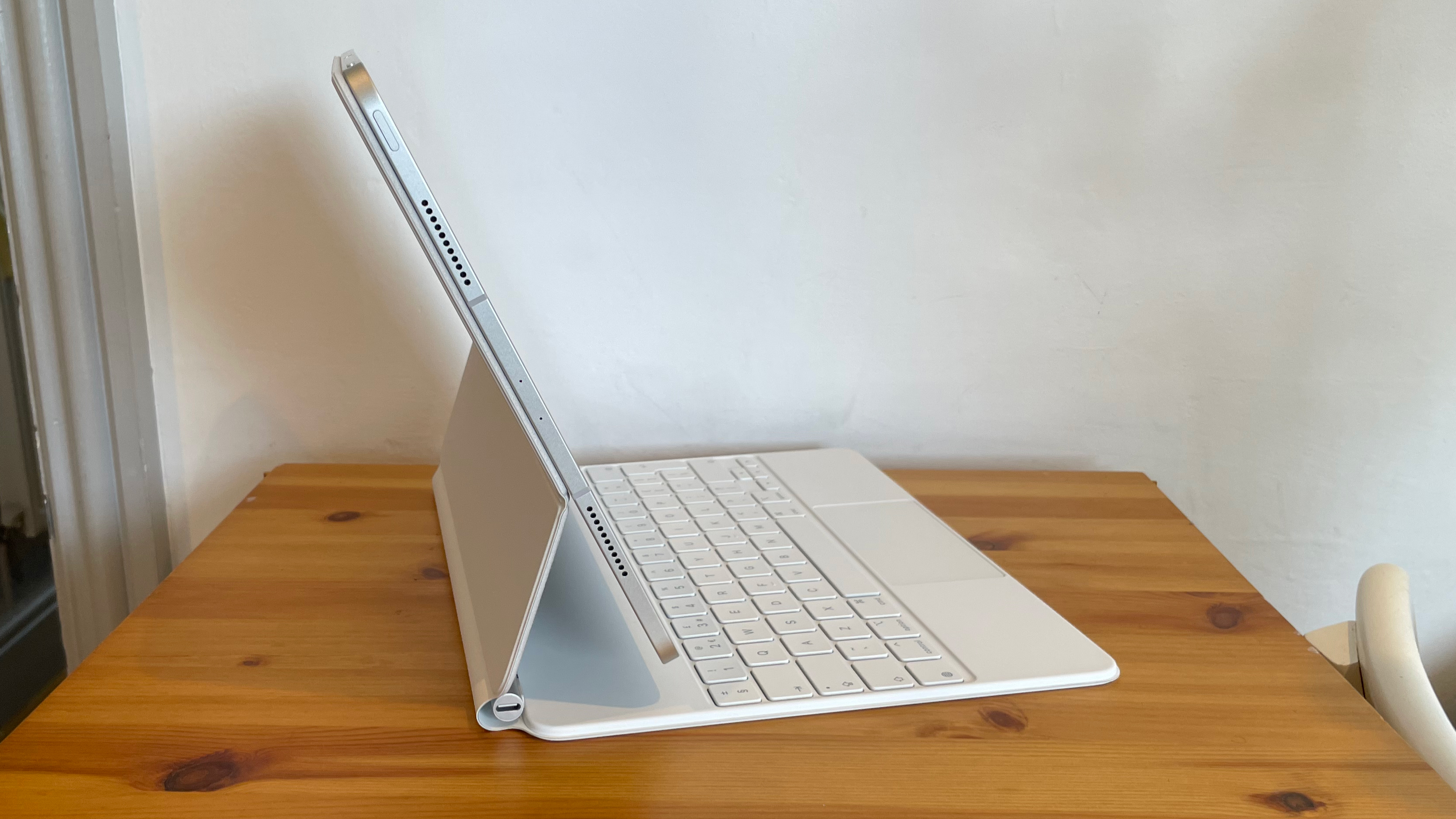
Size: 280.6x214.9x6.4mm
Weight: 682g
Processor: Apple M1
Resolution: 2732x2048
Screen: 12.9-inch mini-LED LCD
Storage: From 256GB
Battery: 40.88Wh, up to 10 hours
The new 12.9-inch iPad Pro (M1) is Apple taking a lap of honour. The iPad is utterly dominant in the mainstream tablet market as well as the more specialist pro end, and yet the company isn’t resting on its laurels. With this new iPad Pro (M1), it unveils two big leaps forward to give it an even bigger lead in a race that it has long since won.
First is the use of its M1 chip, which has so far only appeared in Macs, and has absolutely blown the competition out of the water when it comes to performance. And now all of that power comes to the iPad too, potentially enabling apps to get truly ridiculous.
And second is the new mini-LED-powered XDR display. This is exclusive to the 12.9-inch model, and brings HDR display performance that’s in line with Apple’s Pro Display XDR – when it comes to colour accuracy, contrast and brightness in combination, this should be one of the best displays on the planet. And it fits in a handbag.
So there’s no question, then, that the iPad Pro remains dominant as a creative tablet powerhouse… but does the M1 chip fix the app and workflow issues that hold the iPad back compared to the likes of the Surface Pro? And do you definitely need this power and screen, compared to what the iPad Air gives you? Read on for our full verdict.
After one of the best iPad Pro deals, or the best iPad mini prices? We've got you covered. And if you want more than one of your five-a-day, check out our run down of the best Apple deals out there too. And if you're weighing up this tablet for your artwork, then also see our best drawing tablets.
iPad Pro M1: Price
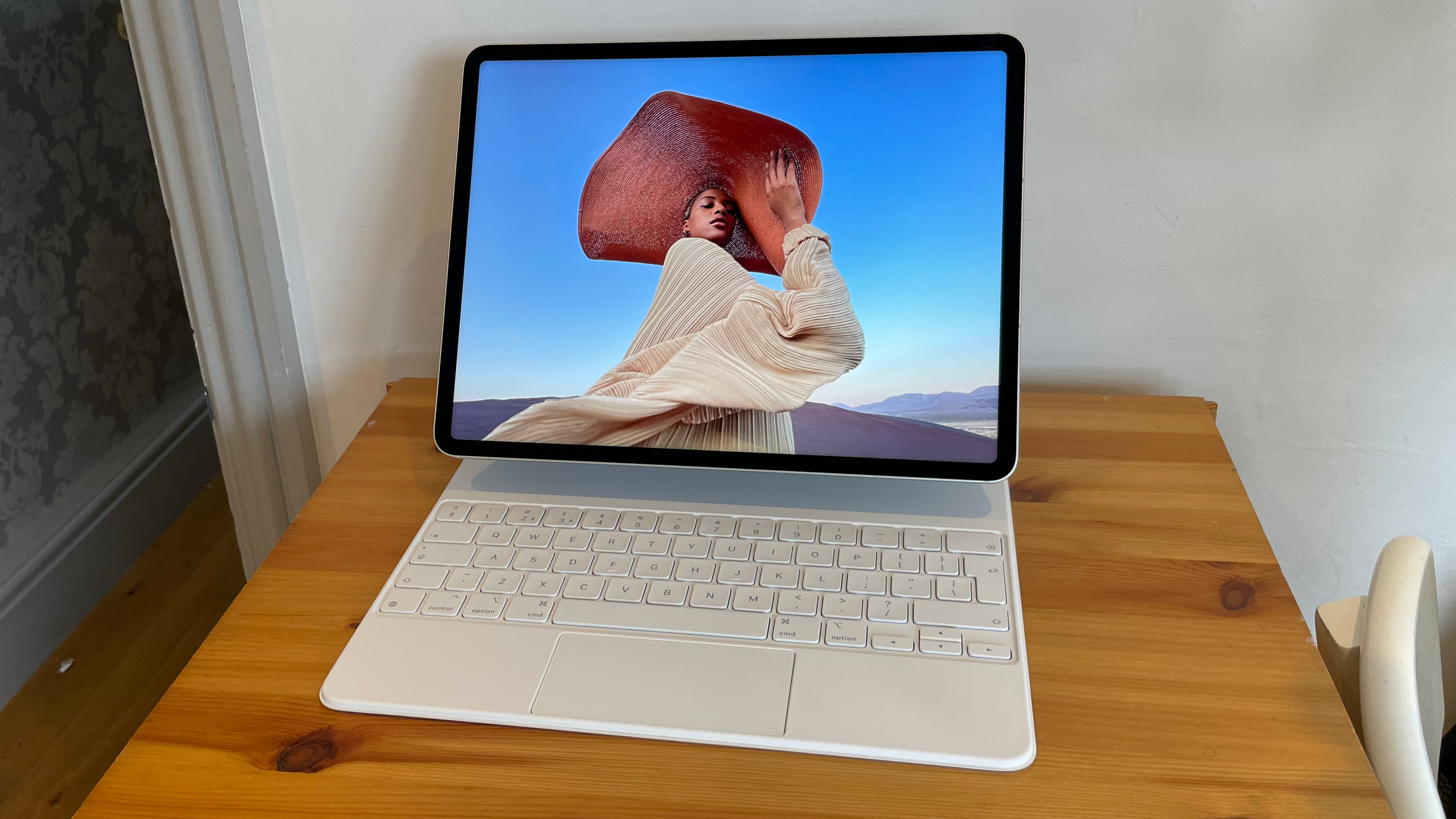
The new iPad Pro (M1) 12.9-inch starts at £999/$1,099/AU$1,649 with 128GB of storage, though you can step up to 256GB, 512GB, 1TB or 2TB of built-in storage, with a corresponding step in price each time, of course.
The 1TB and 2TB versions also include 16GB of RAM in the M1 processor, whereas the three smaller version use the M1 with 8GB of RAM – you can’t choose to change the RAM amount any other way.
That price gets you the Wi-Fi-only version – you can add 5G connectivity to any of these models for an additional £150/$200/AU$250.
iPad Pro M1: Screen & speakers
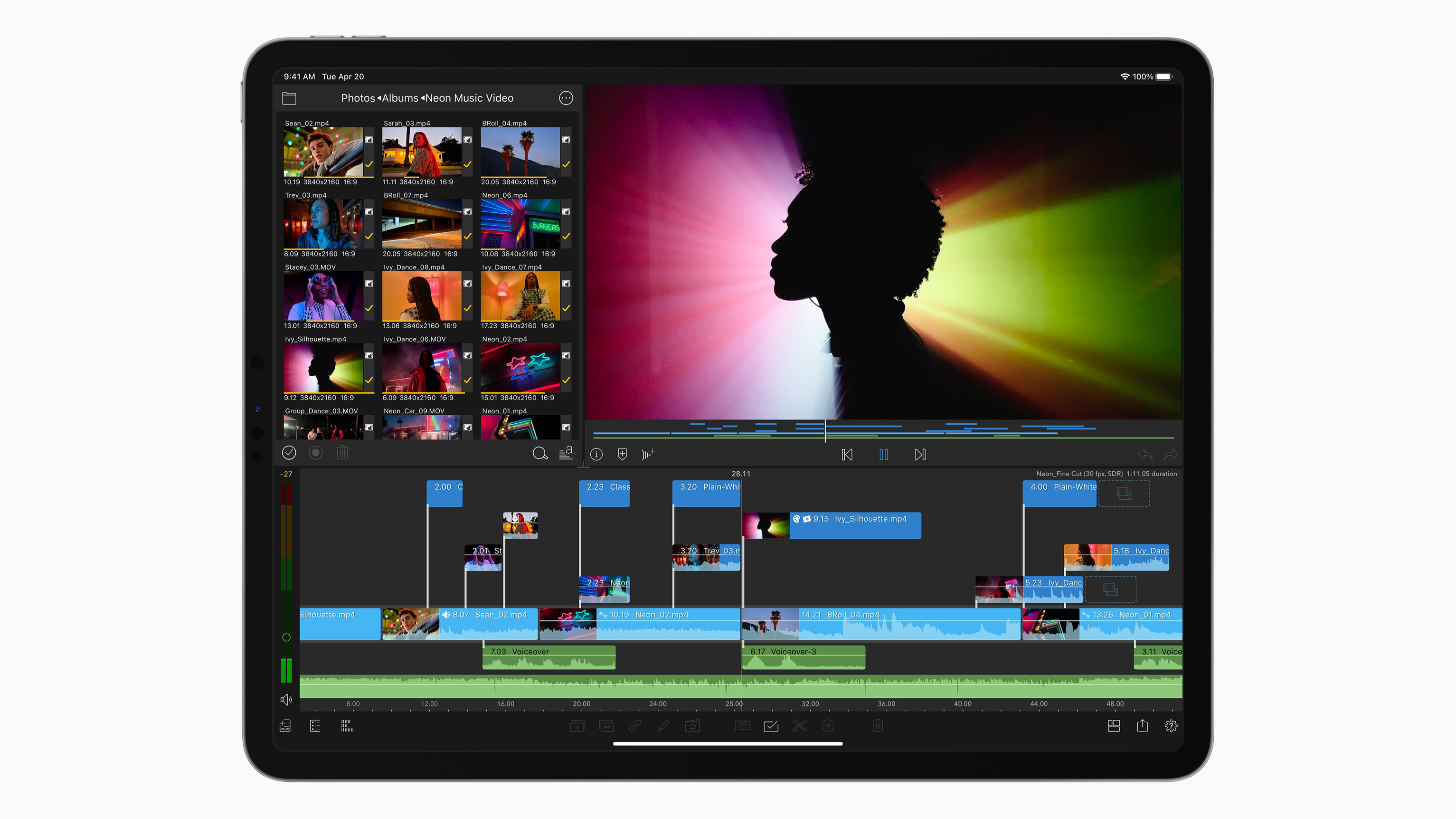
The HDR screen of the iPad Pro (M1) is obviously one of the big draws here, and it doesn’t disappoint when you feed it a great HDR source. The mini-LED backlight enables a clear improvement in vibrancy when compared to the previous model, but it’s not just the 1,600 nits of peak brightness and 1,000 nits of fullscreen brightness that stand out – the better control of local dimming means that darker areas have much more nuance and depth to them, with clear and precise shadow that houses detail, rather then the just the dim cloak of darkness that edge-lit LCD screens can suffer from.
We were a bit disappointed to realise that this new higher brightness only applies to HDR videos and photos. As far as using HDR when producing videos goes, then, you’ll be relying partly on your app, the format of your video, and whether the iPad is convinced that it’s worthy to be displayed in HDR. An iPhone Dolby Vision video in iMovie won’t be a problem, but will your 10-bit video display in HDR in LumaFusion? Or Adobe Rush? It’s too early for us to to be answer all these questions, but in principle if you use software updated well, you should be able to take advantage of it.
For general use, the new iPad Pro (M1) sticks to the same 600-nit brightness as the model before, which helps to protect battery life. It would have been nice to be able to draw or write outside and have 1,000 nits of brightness cut through the sunlight so everything was still clear, but it’s not like 600 nits is anything other than respectable.
And, in fact, even with the brightness limited to the same levels as the previous model, the new screen is still a clearly visible advantage. In SDR video, for example, darker areas of the screen still benefit from the better control of contrast, even without HDR’s information boost. Similarly, colours in the brighter parts of the video look a little more vibrant and realistic.
It has an effect in the UI of apps as well. It’s most prominent if you have some white text or an icon on a dark background. Because of the extra precision in the backlight, the white is able to be brighter and cleaner than the previous model, and the darkness can be deeper, with truer black tones. And the shape of the text or icon actually look clearer and sharper because of the improved contrast.
As ever, accuracy is impeccable, and colours only appear boosted in the quality of their reproduction by the direct application of a very even backlight. The resolution is more than high enough to let you work in perfect detail, of course.
Apple fits a truly impressive speaker array in the iPad Pro (M1), with drivers in all four corners, which adjust their output depending on which way up you hold it, to be the best balance and produce a solid stereo effect. Obviously, most video or audio pros will have their choice of headphones, but it’s nice to know that if you want to show off your work to anyone else quickly, they’ll hear it in good quality. And it’s great for just watching videos while washing up, of course.
iPad Pro M1: Performance
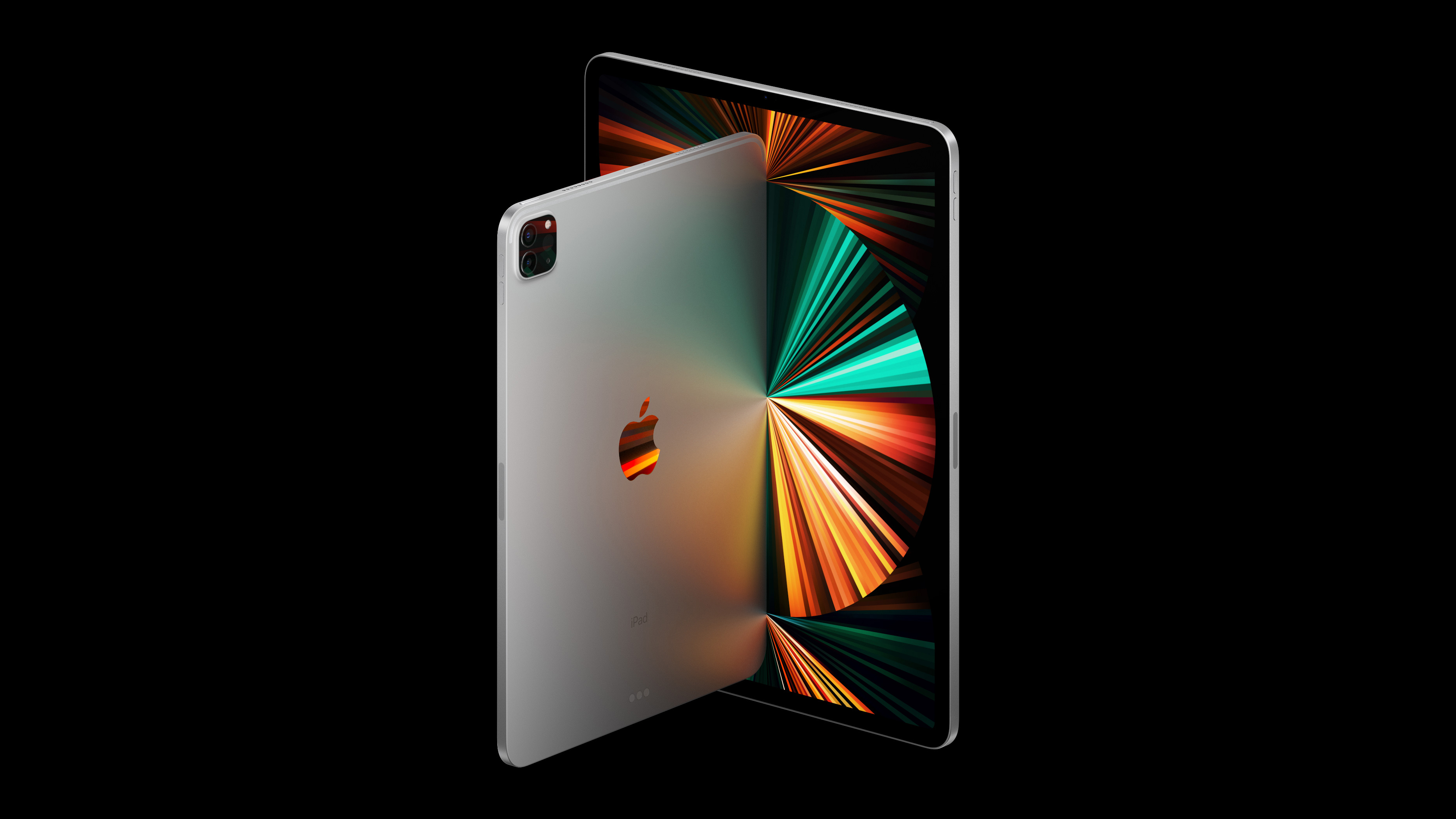
The iPad Pro M1 is, no surprise, incredibly powerful. It doesn’t just blow other tablets out of the water, it puts them into a slightly soggy orbit. It’s an eight-core processor, and we tested the version with 16GB of RAM.
In Geekbench 5 benchmarks, it scores 1710 for single-core, and 6869 for multi-core. That’s much faster for single core than the Intel Core i9 in the 16-inch MacBook Pro, and notably better for multi-core. The multi-core is just a little lower than the M1 scored for us in the iMac 24-inch, which may be due to the thermal constraints of the fanless iPad compared to the cooled desktop.
The GPU is also at the same level is a light laptop GPU – better than pretty much any integrated GPU, though not at the same level as a discrete option. But you would never see a discrete GPU in a 6.4mm body, unless you’d had an accident with a hydraulic press.
There’s no question that there’s a ridiculous amount of power here, but for most iPad tasks, the M1 doesn’t actually add anything more that’s perceptible. The previous iPad Pro was extremely fast for general use, and capable of multitasking handily. The iPad Air is equally capable, and scores close to this iPad Pro for single-core processor performance in Geekbench.
So what’s all this power for? There are some apps that can make use of it. Affinity Designer, for example, is designed to take advantage of as much power as it can reach, so as you throw more complexity at it, it’ll just apply more combined CPU and GPU power to make sure that it never slows down.
LumaFusion is working on an update that includes multi-cam editing, and you can play lots of 4K video streams at once and create a video from them with no slowdown at all.
What the M1 provides is headroom for the iPad to get more and more ambitious… but this means that right now, the number of people who’ll really take advantage of it is low, and it may not be for lack of trying by users.
GarageBand for iPad remains limited to 32 tracks – that’s somewhat lower than the 255 of GarageBand on Mac, or the 1,000 of Logic. The M1 won’t be pushed by Apple’s own flagship music app on iPad, no matter how complex a user would be willing to get.
We tried an export from iMovie of a short video, and both the new iPad Pro and previous iPad Pro did it in the exact same amount of time, even though the new iPad is much more powerful in theory, and has faster storage. The timing here clearly isn’t linked directly to processing power – other hardware acceleration is likely involved. Again, Apple’s own software doesn’t take advantage of the chip.
Perhaps we’ll see iPad versions of Logic and Final Cut that arrive with iPadOS 15, ready to take the limiter off the M1, and really show what’s possible.
Speaking of which, the other reason the M1’s extra power is only of limited effect in the iPad is that iPadOS’ inherent clunkiness still has more of an effect on working speed than processing performance.
Aligning two apps side by side is a more fiddly gesture than it needs to be. Switching between split-screened apps is confusing. Moving files between apps can be slow and unpredictable as to how things will actually react. And don’t even get us started on things like an image downloading, editing and uploading workflow… simple and easy on desktop, but painfully fiddly on iPad.
The actual apps on iPad are better than you find on any other platform, and despite this issues, the interface overall is better for touchscreens than Windows tablets… but it still feels caught between trying to maintain the simplicity of its roots as a phone system, and the complexity if its ambitions to be a pro machine.
Like the M1, the 5G performance is very fast indeed. We registered 300Mbps down and 65Mbps up. Even when it went flakier on us, it only dropped to 136Mbps down and 21Mbps up. We should note, though, that in the UK where we tested, 5G upgrades tend to come with massive 4G upgrades too. Switching to 4G got us 91Mbps down and 54Mbps up, so not exactly slouching speeds.
As for battery life, Apple still aims for around 10 hours of standard light web use, and that fits with our experience. Testing the HDR video, we saw a drop of 25% over two hours, which suggests that the extra brightness definitely takes a toll, further explaining Apple’s 600-nit limitation most of the time. What really impressed us, though, was 5G use. Downloading a two-hour 4K HDR video from iTunes didn’t even knock the battery down 1% – it stayed unmoved at 100%. On iPhone, we saw the same kind of movie download drop the battery by 3%.
iPad Pro M1: Features & accessories
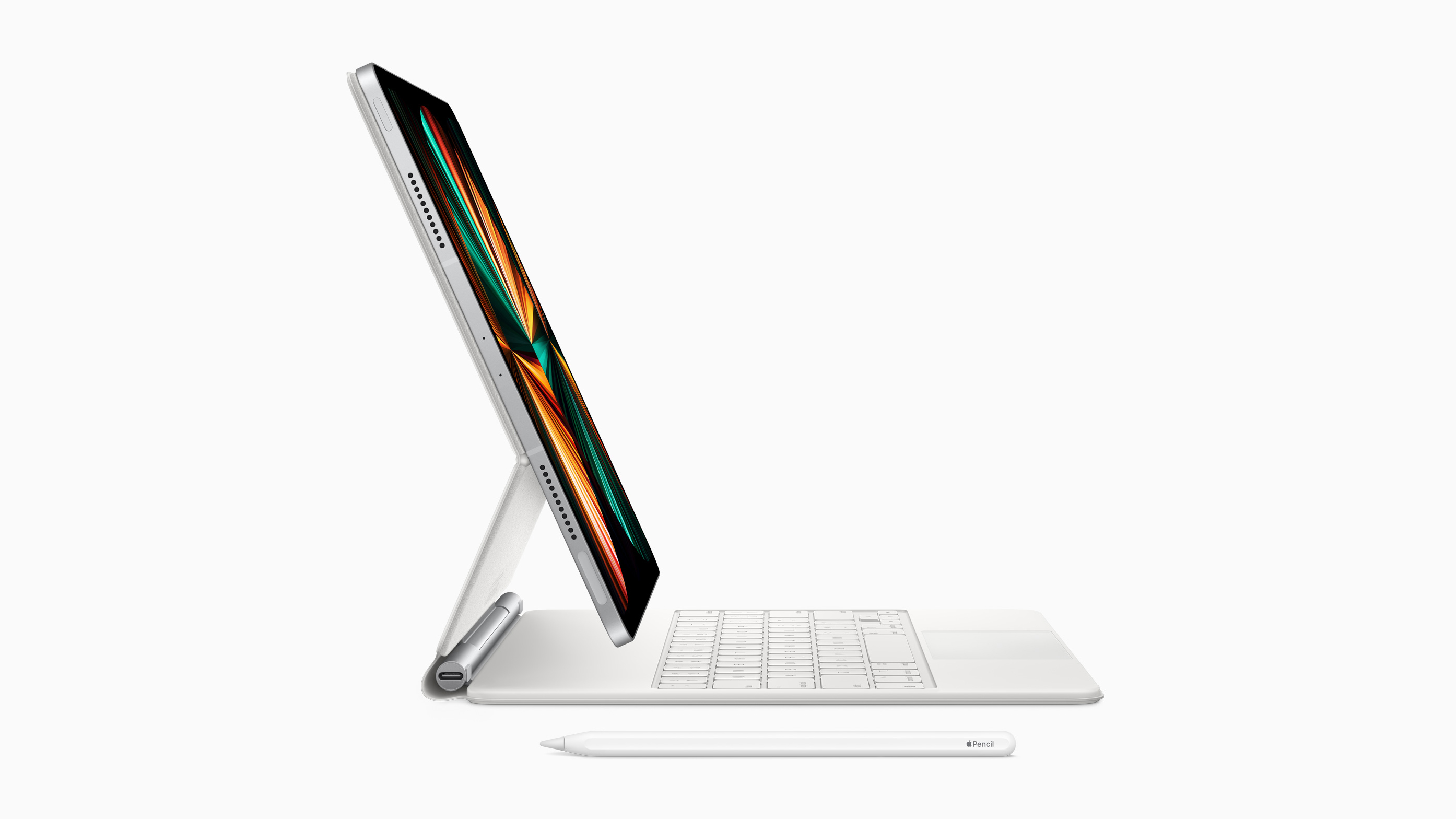
Outside of the M1 and screen, the big new feature of the iPad Pro (M1) is ‘Centre Stage’, a new feature on the front camera that makes its debut on any Apple device here – and we’re amazed it wasn’t also on the iMac 24-inch, but we expect it’ll find its way to other products soon enough.
Basically, the front camera is an ultra-wide-angle 12MP affair, and when you enable Centre Stage in a video calling app, the software finds the person in shot, and crops the image just on them. If you move around, the framing will actually follow you, despite the iPad not moving – it’s just taking advantage of the ultra-wide lens. You can move left and right, or stand up/sit down, and you’re still central and visible. If someone else walks into its view, it reframes to fit you both in. It works great, with only a slight delay when following you – no one would really notice it. It’s just a little bit of software magic.
The dual rear cameras have had a couple of small boosts – there’s better image processing thanks to the M1, and the LiDAR sensor can now be used for faster autofocus, which makes a big difference in low light. You still get a 12MP wide-angle and 10MP ultra-wide – they’re solid cameras, especially for a tablet.
The lone port on the new iPad Pro has had an upgrade – it’s not just USB-C any more, but is also Thunderbolt 4. This pairs nicely with the faster internal storage and M1’s speed for connecting with extremely high-speed accessories – photographers and videographers will probably be the biggest beneficiaries. Not only can you hook up to your RAID, but also external displays of up to 6K resolution now, though external display support remains quite awkward and limited (again, roll on iPadOS 15).
That’s all great, but only having one port can be a bit awkward for charging the iPad while connecting to an accessory, depending on whether you’re going through a hub or not. (Using the Magic Keyboard adds an extra charging port.)
Apple Pencil 2 remains unchanged, and works excellently here, and the 120Hz screen helps to keep responsiveness as good as you could want. Our only real gripe is something unchanged from the previous model – the feel of the Pencil tip when it hits the glass is very hard, and isn’t an especially pleasant thing, compared to the softer plastics you tend to get on drawing tablets. But this is no reason not to buy it.
The Magic Keyboard continues to be one of the best and most hideously priced accessories on the market. As a keyboard, it’s excellent, and having the trackpad option is truly useful for a variety of apps, not the least of which is simply text editing, which we all have to get stuck into regularly, so it’s a good quality-of-life improvement.
But it’s just so expensive for a keyboard case with no smarts of its own. And especially since it’s not that flexible a case, lacking any good portrait support or low angle for drawing. The price would be unjustifiable, but the experience is great so it gets away with it. If you want the flexibility of making your iPad Pro into a laptop-like when you need to, it’s simply the best option. And the new white version looks nice with the silver iPad.
A quick note on the previous Magic Keyboard here – you may have heard that the new iPad Pro isn’t compatible with the old Magic Keyboard, but we’ve tried it, and it appears to be just fine. We’ve had no functional issues or problems with it’s folded into the case.
iPad Pro M1: Should you buy it?

The iPad Pro (M1) is the best tablet out there, and one of the best creative tools on the planet. There’s no question about that. The video performance is better than anything else in its class, and actually better than most dedicated monitors, albeit at a small size.
The power of the M1 means that it’s an incredibly future-proofed tool – whatever possibilities will exist on iPad in the future, this Pro will be able to handle them. The Thunderbolt 4 port only adds to this.
But it feels like a lot of what this tablet offers goes untapped currently for a lot of people. You might be working in a particular field with a type of app where you’ll make use of what this offers, in which case it’s an unequivocal recommendation. And if you simply want the best tablet and are willing to spend the money, then this is it. Even if you don’t work in pro video, regular travellers will love having such a strong screen to watch.
For everyone else, it’s just a question of whether it’s overkill. Could the 11-inch iPad Pro satisfy you, since it has all the features of this, just with a smaller screen and non-HDR screen? Could the iPad Air, which still checks most of the same boxes as the pros, but would leave you with a lot more budget for accessories?
Compared to Windows tablets, there’s not really question that the iPad wins out on features – it’s all about software there. The new iPad Pro does nothing to change the fact that if you need desktop OS access sometimes, you may need to go with a Surface Pro or equivalent instead. But in every other situation, we’d take the iPad Pro.
Related articles:
- The 26 best iPad Pro apps to make your Apple Pencil shine
- iPad Pro vs MacBook Air: which should you buy?
- The best iPad stylus: Top iPad pens for drawing

Thank you for reading 5 articles this month* Join now for unlimited access
Enjoy your first month for just £1 / $1 / €1
*Read 5 free articles per month without a subscription

Join now for unlimited access
Try first month for just £1 / $1 / €1
out of 10
The iPad Pro 12.9-inch (M1) offers one of the best screens ever made, and as much power as a desktop PC. It’s the most flexible creative tool on the planet, but the total package may be overkill for some, and iPadOS needs to evolve along with it.
Matt is Managing Editor at TechRadar.com, and previously worked on T3, MacLife and MacFormat. He's been testing technology for over a decade, working in specialist Apple publications as well general technology and creative journalism, and has charted Apple’s ups and downs since his student days (but still hopes to hear “one more thing”). By day, you can find him covering TV, audio, smart home gear and more at T3.com, as Home Tech Editor. By night, he's probably updating or pairing or installing some new piece of technology in the quest for the perfect setup.



